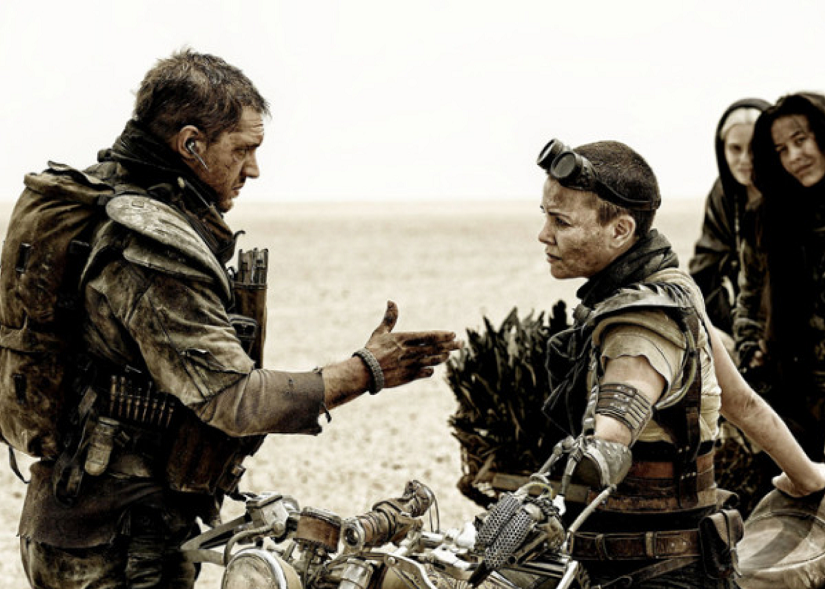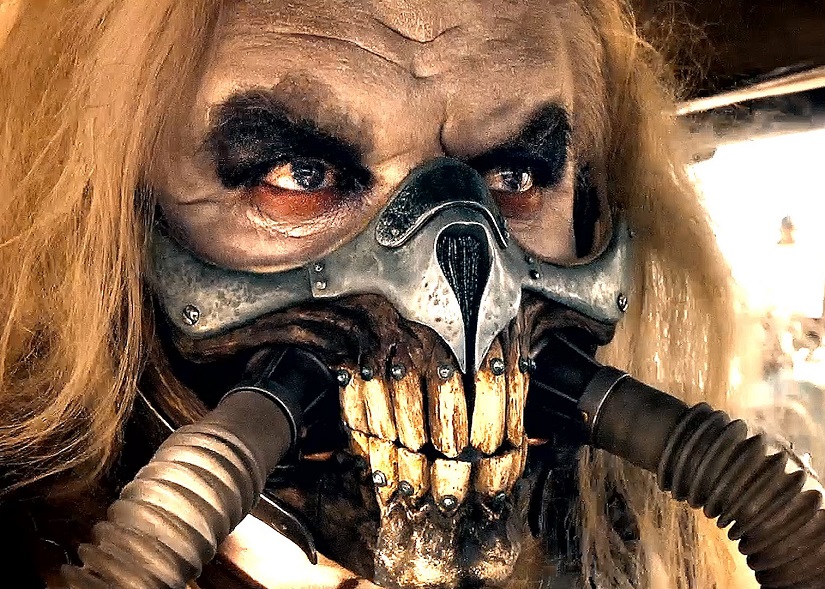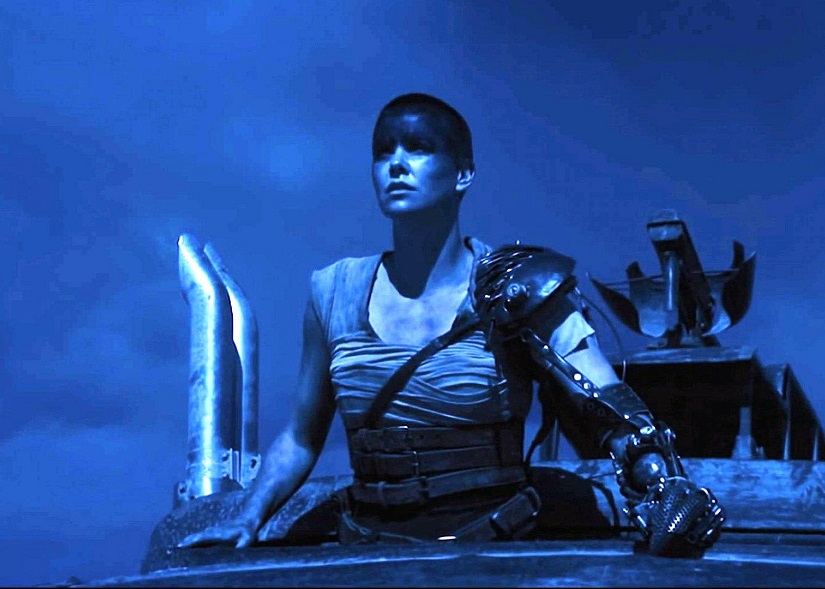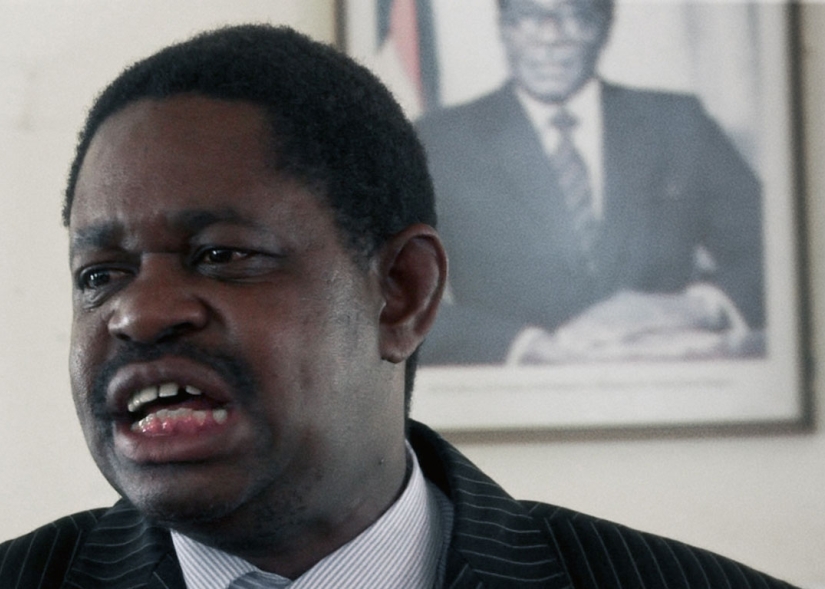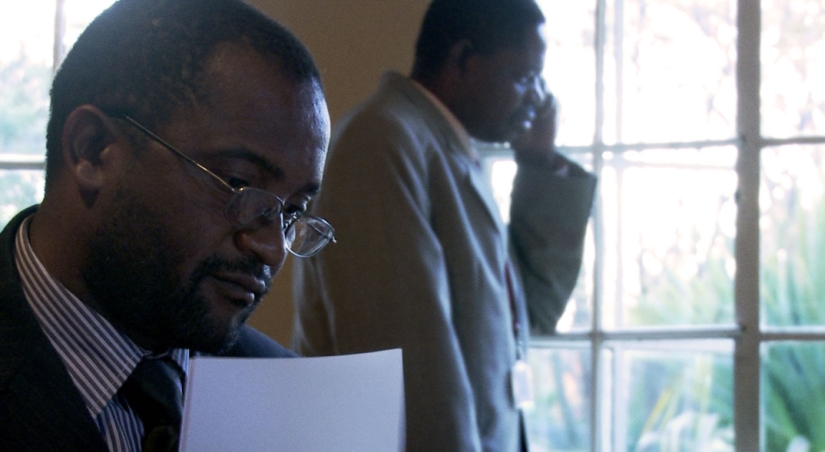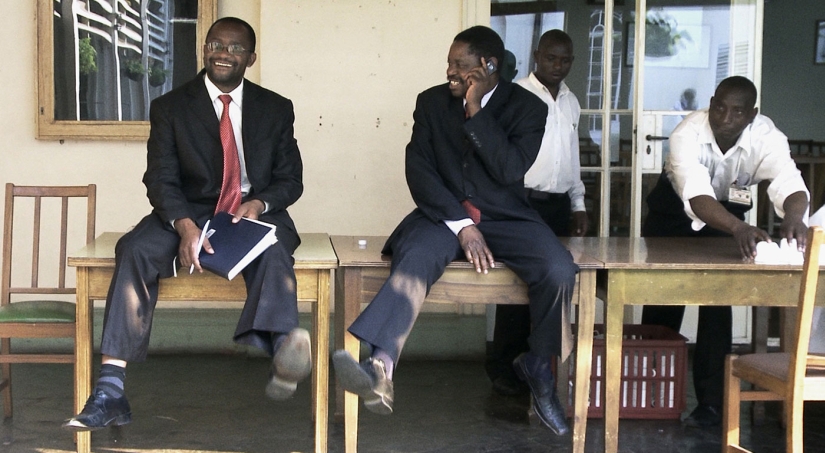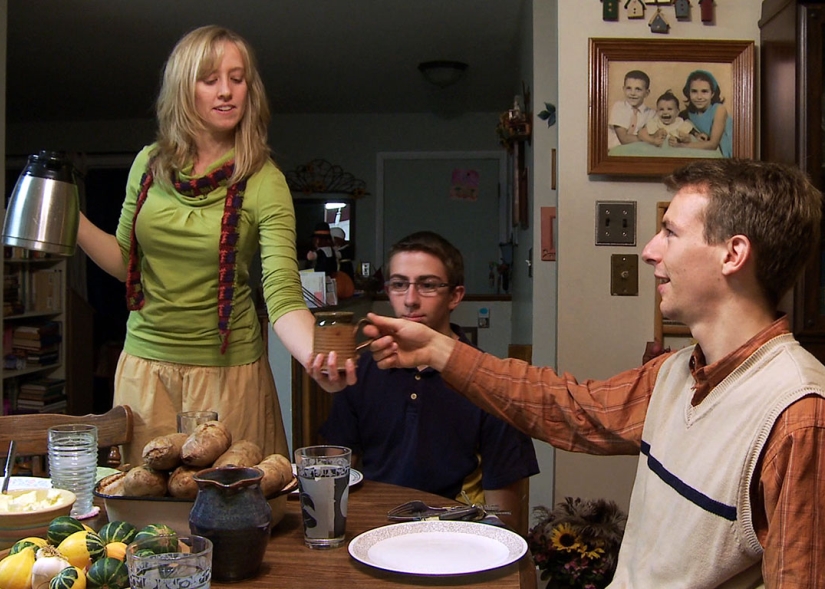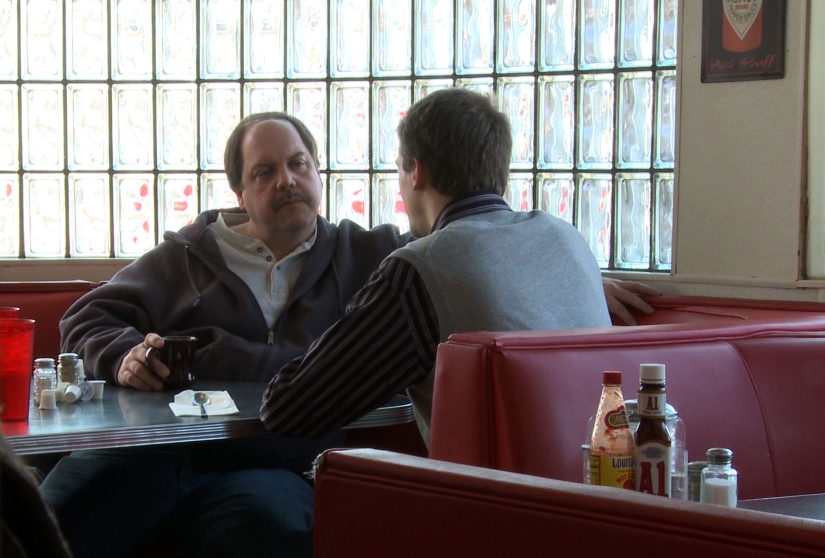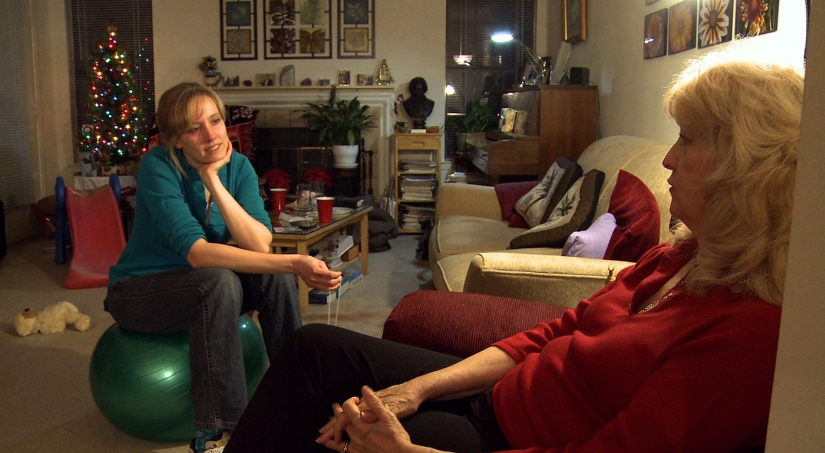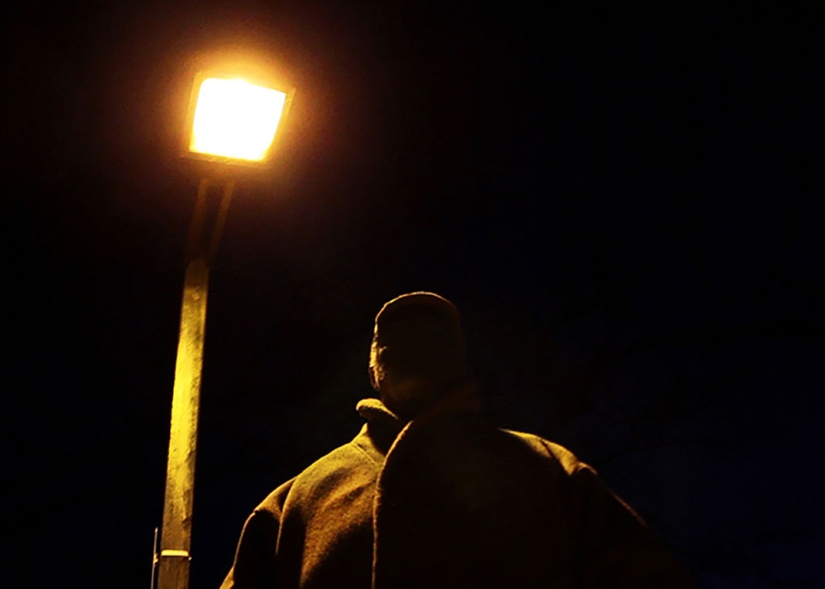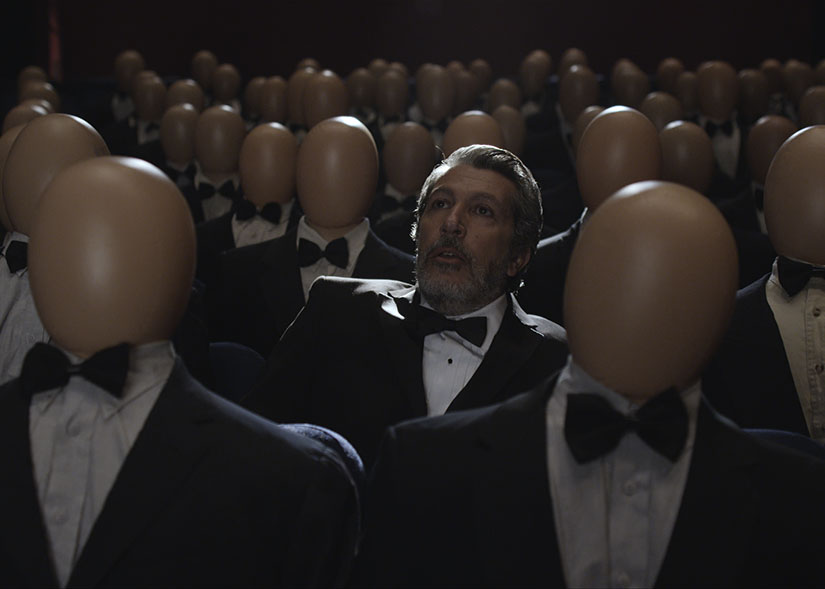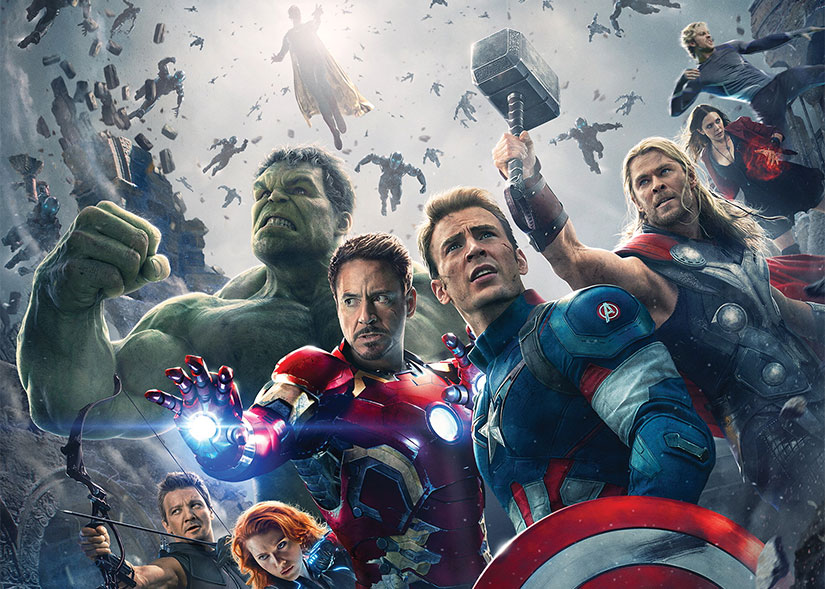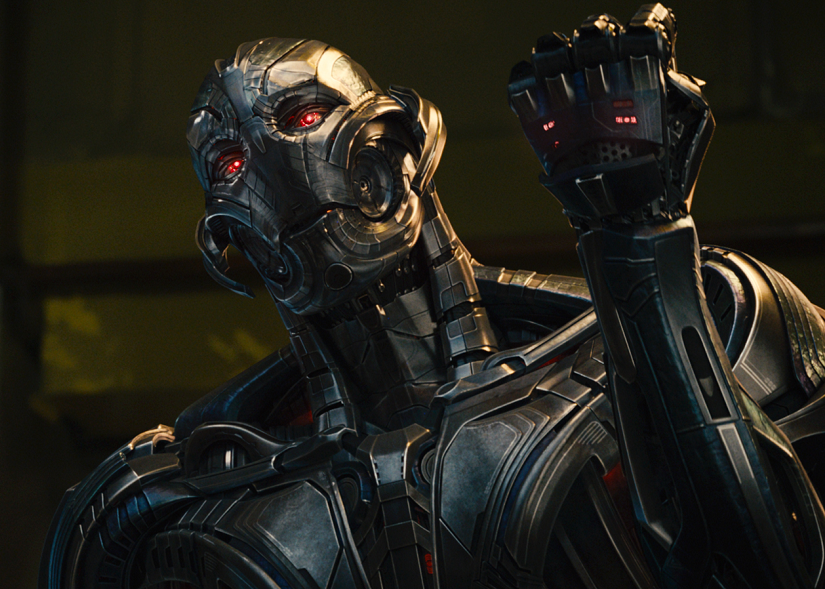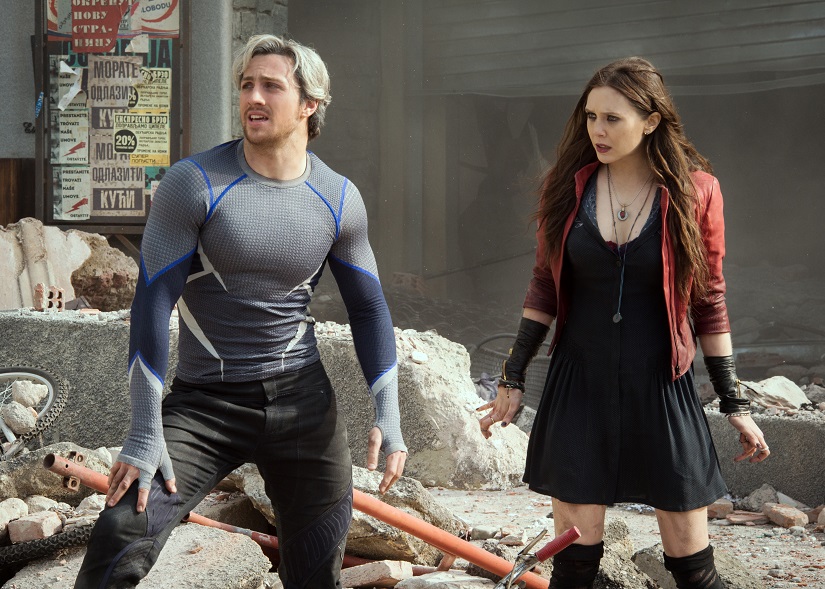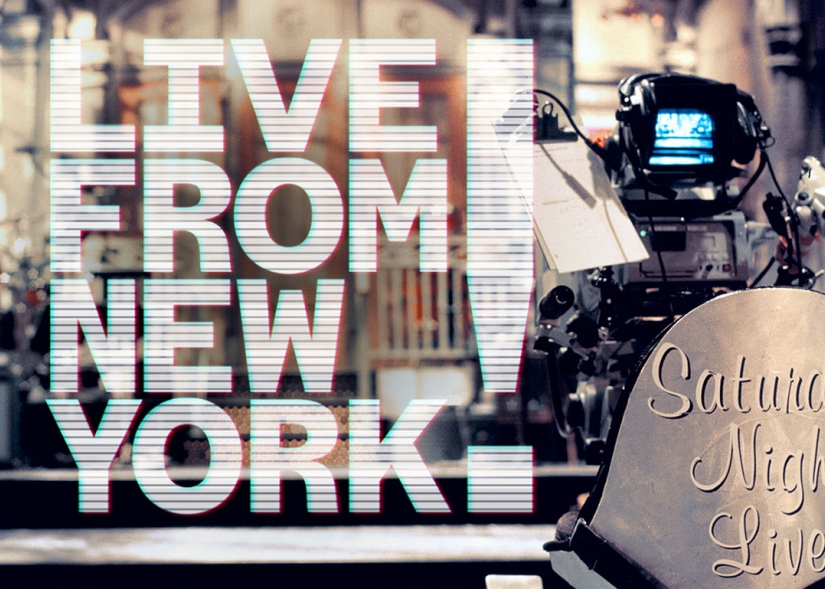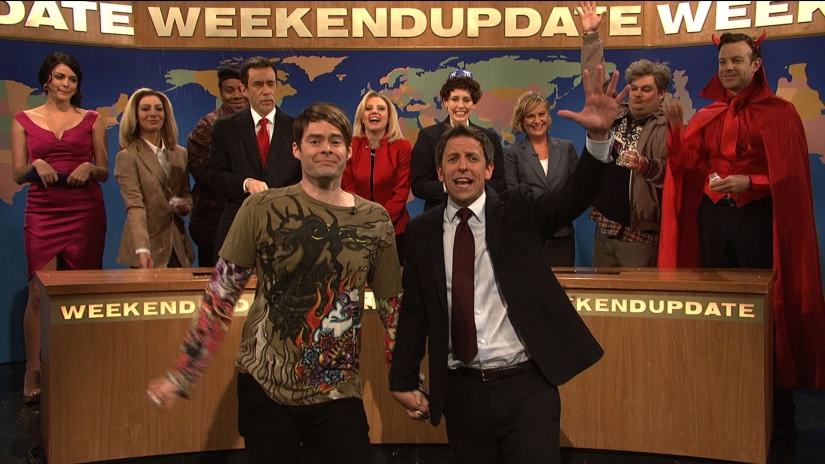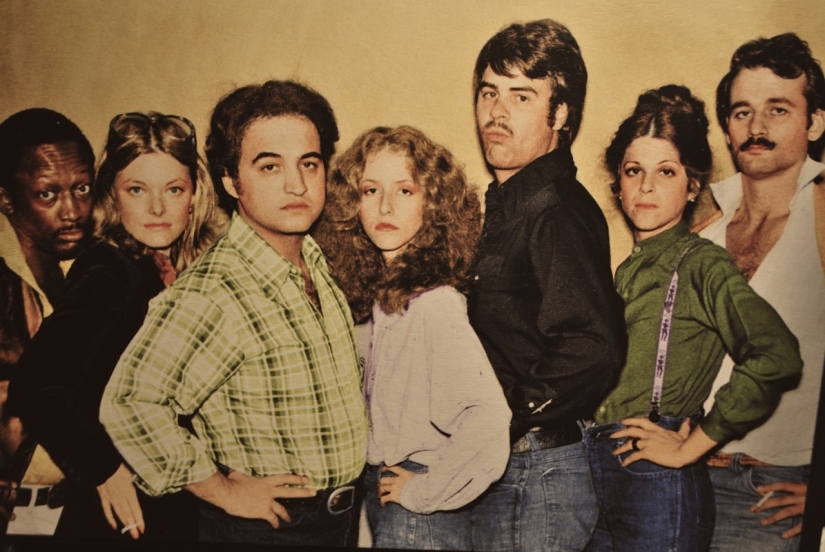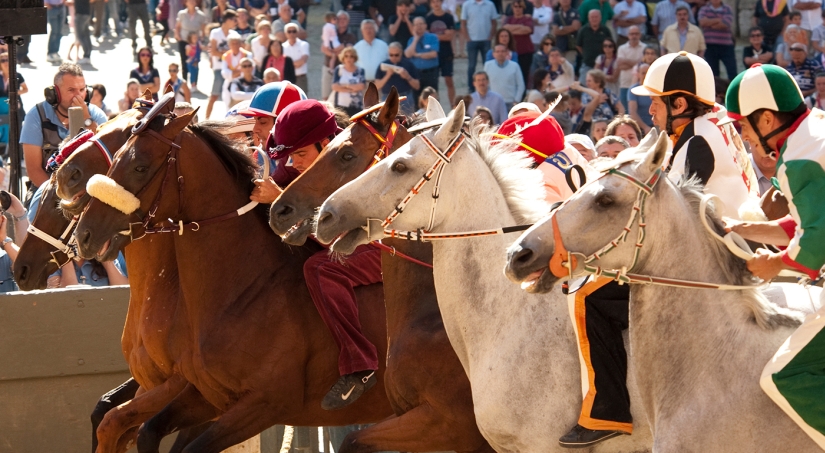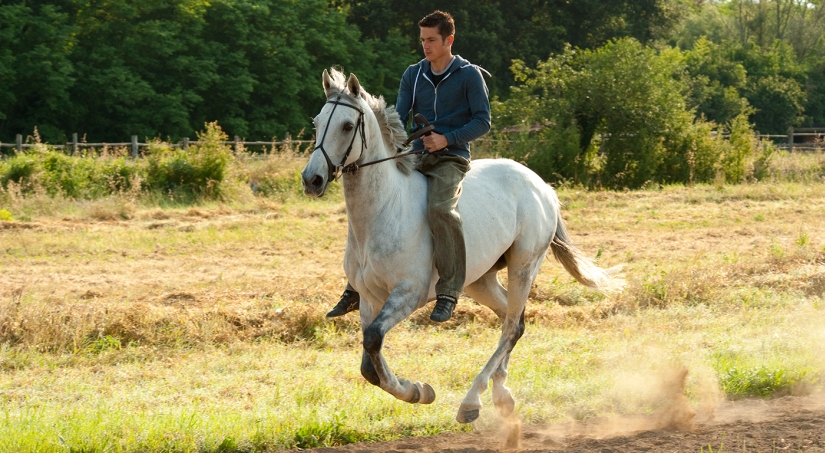[Review] Mad Max: Fury Road
Thirty years have passed since director George Miller's last visit to the dystopian future of his most famous creation, Mad Max. Since then, he's preoccupied himself with such family fare as two Happy Feet movies and a Babe sequel, having struggled to get this third Max sequel off the ground since 1998. Fury Road suggests the long wait left him with one hell of a madness build-up to get out of his system.
Loud, plotless and visually jaw-dropping, Fury Road is a heavy metal spiritual successor to the punk western stylings of its three predecessors. It's a comic book movie without a comic book, a cacophonous symphony which rejoices in the deceptive precision of its orchestrated hell-raising. At a time when many action directors attempt to hide the increasingly overfamiliar of their destructive set-pieces behind manic, incoherent shooting, Miller conducts his extended suites with a hand that grows ever more intricate as the turmoil intensifies, guiding his audience from note to note with absolute assurance and clarity.
[youtube id="woHTUsl66BY"]
Mad Max: Fury Road
Director: George Miller
Rating: R
Release Date: May 14th, 2015
Fury Road suits its title well: for all the anger and havoc unfolding on-screen, Miller ensures the audience always knows where they are going and where they have come from. It is not a movie which particularly embraces the idea of cause and effect, with its action beats tending to occur as short and punchy individual passages rather than piling on top of each other, but within those beats, the mechanics and geography of each scene are laid out and adhered to with the certainty required for each movement to flow effortlessly into the next, earning enough trust that any lapses are easy to fill through imagination and previously acquired information.
If I'm labouring the point, it's because Fury Road represents everything the Michael Bay-inspired modern action movie aspires to, but with all the finesse those movies so desperate need and lack. Bay himself, as the originator of his style, has a reasonable grasp of georgraphy but an inability to restrain his perpetually ejaculating camera long enough to bring the audience in on the bliss of the climax. Far worse are his imitators, who offer only empty bragaddocio before limp disappointment at the main event. Miller understands the importance of the tease and the ecstatic delight of carefully controlled rhythm. The dangers of frustrating repetition are high in a two-hour chase movie, yet Miller knows when to hold back and give his audience time to recharge and discover pleasures easily overlooked in the rush, before kicking the engine back into life and starting all over again.
It's in those secret pleasures where Fury Road is arguably at its most compelling. The vehicular carnage that makes up the bulk of the action offers giddy, head-banging highs unlike any movie in a long time, but the context provided by the subtly suggestive world building is what really makes it sing. Again like his action, Miller's dystopia is rabidly anarchic, yet built on immediately comprehensible power structures. There's no need for the movie to go into such depth on the intricacies of the quasi-religious mythology Immortan Joe (a fearsome Hugh Keays-Byrne) uses to control his war boys, yet with only a few lines of dialogue and off-hand visual suggestions, each detail makes the world more lived-in and tangible, deeping the credibility and stakes of the otherwise thin central plotline.
That's not to say there aren't missteps. Despite the movie's title, Theron's gloriously named Imperator Furiosa is its dramatic centre of gravity, reducing Max to little more than a passenger in his own movie. Furiosa is a commanding and exciting lead, helped by a mesmerisingly gladiatorial performance from Theron, but dominates the movie to such an extent that everything which doesn't involve her - Max's PTSD, for instance - feels aimless, even with her story ultimately little more than a journey from point A to B. As a character, she's complex, moral and focused, with a stated goal and means of achieving it, where Max is a mumbling wanderer who happens to land by her side to lend a hand. It's obvious whose story Miller is more interested in telling - a mooted sequel, unsurprisingly, has been named Mad Max: Furiosa - but there's some dissonance between the audience largely experiencing Furiosa's story from the point-of-view of Max, a character of such secondary presence as to sometimes feel mandated to fit the movie part into an established series.
Max is salvaged by another rich performance from Hardy, who bears no physical resemblance to Mel Gibson and whose character is tangentially connected at best. The ravages of his internal torment at the family he was unable to save play out not only in the slightly ham-fisted visions which afflict him at every turn, but the contrast Hardy puts between the softness of his mumbled, barely audible voice and the twitchy tinderbox of his violent instincts. Hardy's training as Bane in using his face to convey depths of conviction and emotional vulnerability is put to potent use here: note the scene in which he witnesses, for the first time, the five girls Furiosa is smuggling away from their lives of sexual servitude at Immortan Joe's grotesque hands. The sight of their beauty amid the hellish, arid landscape of his life leaves Max confused, aroused and angered, a complex and historied conflict which Hardy plays out in a few seconds on his furrowed, awe-struck face.
Nicholas Hoult also brings considerable soul to warboy Nux, who finds himself broken off from the clan which gave his life purpose and having to navigate a more complex world than he ever imagined. Like Max, he exists in the shadow of Theron's imperious Furiosa and despite Hoult's best efforts, and a sweet if underdeveloped affection with one of the girls, the character doesn't add much to proceedings beyond comic relief and being an agent for Miller's world-building. That's not a bad thing when so much of the movie's depth comes from its world, but the barebones framework of the plot running through it leads to a handful of problems once Furiosa's story has been told, with nowhere to go but back on itself to facilitate an unconvincingly pat narrative conclusion. But then again, as the old cliché goes, what matters is the journey rather than the destination, and Fury Road provides one hell of a ride getting there.
[Tribeca Review] Democrats
Knowing that dictator Robert Mugabe is still the leader of Zimbabwe doesn't detract from the drama of Camilla Nielsson's documentary Democrats. The film covers the drafting of the country's new constitution, and while recent history is technically a spoiler, the intrigue comes from watching the struggle of ideologies embodied by two opposing individuals. Our primary subjects are Paul Mangwana, who represents Mugabe's ruling ZANU-PF party, and Douglas Mwonzora, who represents the reform-minded opposition MDC-T.
Democrats is about the political process and its headaches, and about a struggle taking place over the course of three years. Nielsson has remarkable access to her two primary subjects and captures many of the impasses and compromises over this stretch of time. She also chronicles various calculated (and corrupt) maneuvers made by ZANU-PF to suppress the opposition. Mangwana smiles as he discusses some of these power plays on camera. He senses, he knows, that the power of the people is often nothing when compared to the power of the state.
Democrats
Director: Camilla Nielsson
Rating: N/A
Release Date: TBD
Early in the film, we see the influence of Mugabe's cult of personality as well as his strong-arm tactics. The arms of the Mugabe government beat voters, they suppress voices, they intimidate opposition. Open constitutional meetings are held with average citizens voicing their political wishes. Those loyal to ZANU-PF pledge fealty to Mugabe and the status quo. Opposing voices feel pressured to remain quiet under threat of violence and imprisonment. ZANU-PF uses other methods of misdirection to squelch dissenting voices, and they don't try that hard to conceal them.
All the while, Mangwana laughs.
His party controls many of the instruments of accountability. No one else can hold them accountable without being threatened. This includes members of the press. Given all this, Mangwana's confident transparency is both refreshing as well as disheartening.
As the face of the political opposition, Mwonzora is high-minded and carries himself with grace and patience. All of these qualities are necessary given the power imbalance MDC-T faces. Like the best political idealists, he's driven by optimism and the belief that concerned people can make a difference. It just takes a lot of effort and time, and that's the problem. Who has the privilege of either given the state of the country? An underlying tension throughout Democrats is how much frustration and setback Mwonzora can take. It's hard not to see the cracks in the brave facade, and it's harder still to not admire this sort of resolve.
Even though stretches of Democrats are built around meetings and party discussions, Nielsson does an admirable job of making the various political maneuvers understandable and engaging. This is thanks in large part to the personalities of Mwonzora and Mangwana, who make excellent foils for one another. We're watching a series of moves made for the political long-game and short-game in Zimbabwe, and it'll be interesting to see what change, if any, eventually comes about.
At one point of Democrats, Mangwana laughs and smiles at the camera as he talks-up the power of the Mugabe government. They have the police, they have the courts, they have so many systems in place against dissenters. Mangwana asks what power words and a legal understanding can make given this disparity. We learn in Democrats what difference they make to the process, but outside the film, we'll have to wait for a definitive answer.
[Tribeca Review] A Courtship
Dating can be awful, but there are worse alternatives. Take the act of Christian Courtship, which is the subject of Amy Kohn's documentary A Courtship. To practice Christian courtship is to save yourself completely for marriage, including your first kiss. The playful snogging in the school yard is done in the devil's territory.
Christian Courtship gets even worse and more bizarre, ultimately forcing women into passivity as they wait for a knight in shining armor to rescue them from the supposed plight of single life. (It's fitting that official Courtship material about the sanctity of a first kiss is sold in form of a picture book/fairy tale.) The women who practice Courtship claim that they are submitting to God's will, but they're really submitting to an antiquated Biblical patriarchy that justifies their treatment as chattel.
See—way worse than dating.
A Courtship
Director: Amy Kohn
Rating: N/A
Release Date: April 18, 2015 (Tribeca)
Kohn's primary focus is a woman named Kelly. She lives with the Wright family, a Courtship-loving family in the Grand Rapids, Michigan area. Ron Wright, the head of the household and Kelly's father-figure, screens all suitors before Kelly even meets them. It's a cross between speed-date and job interview. Ron goes on more dates with these men than Kelly does because Kelly usually isn't allowed to meet the suitor unless the man meets Ron's approval first.
Kelly is 33 years old.
The following becomes apparent while watching A Courtship: Kelly has the same level of maturity about love and relationships as the two Wright daughters, one pre-pubertal and the other adolescent. Unlike the Wright daughters, however, Kelly doesn't have her first kiss to give, which is a deal breaker for some men in the Courtship community.
Again, Kelly is 33 years old.
When it comes to documentaries like A Courtship, there's a question of tone to consider. Are we supposed to mock the subjects or be sympathetic and empathetic to them? Kohn manages a bit of both. It's hard for me not to disparage Courtship as a practice since it's so backwards, so anti-feminist, so anti-modernity. Courtship robs women of agency and, as a theological disagreement in the film shows, devalues their personal beliefs and personhood.
It's also hard for me not to be critical of Ron and Dawn Wright, who push Courtship on their household. Yet by allowing Ron and Dawn to discuss their own marriage with candor, Kohn's discovers the justification for believing in Courtship. Even I'll admit that Courtship for the Wrights comes from a place of genuine (and suffocating) parental concern. On the other side, it's difficult to not feel bad for Kelly, who seems so wrapped up in the idea of marriage as something that will complete her existence, so afraid of being a disappointment to someone (though mostly a disappointment to herself) that she's opted for passivity. For her, it's better that passivity than the vulnerability that's necessary to love someone.
Kohn follows Kelly to visit her mother's house, where we learn a little bit more about Kelly's upbringing and her parents' relationship. There's a home movie of Kelly, just a little girl, sitting on a ball and bouncing up and down with joy, carefree. When Kelly tells her mom about Courtship, her mother offers one of the documentary's few dissenting opinions about the practice. During this discussion, Kelly sits on a yoga ball in a way that's a little too much like the home movie of her as a child. I'm hesitant to psychoanalyze, but the scene sadly makes sense.
[Tribeca Review] (T)ERROR
In Lyric R. Cabral and David Felix Sutcliffe's documentary (T)ERROR, good counterterrorism intelligence seems to be a secondary worry for Shariff. He's 63 years old, he's an ex-con, he's been an FBI informant for decades, and, most importantly, he has bills to pay. That's always in the back of his mind—he does this because he needs the work, and he'll do whatever he has to in order to keep getting work. The gigs involve glad-handing his way into Muslim communities, getting to know a person of interest, and trying to get that POI to incriminate himself so the FBI can do the rest.
Nevermind the actual motives of the POI, in this case a Muslim convert named Khalifah Al-Akili. It's all about the arrest. This is an operation of entrapment, pure and simple, but the FBI gets what the FBI wants. Shariff has no choice but to comply. When the film is fully in motion, (T)ERROR reveals the malleability of personal desperation and how government abuses are permissible under the shield of counterterrorism.
(T)ERROR
Directors: Lyric R. Cabral and David Felix Sutcliffe
Rating: N/A
Release Date: 4/16/2015 (Tribeca)
It's not just desperation that drives Shariff. (T)ERROR looks back on the arrest and incarceration of Tarik Shah, a jazz musician that Shariff helped convict. When we learn more about Shah and what he said and the way that Shariff coaxed it out of him, we sense a fundamental sense of desperation driving Shah's words. Even hypothetical allegiance to Al Qaeda is allegiance enough for arrest. The system isn't just corrupt, it's also absurd and is committed to keeping the poor and the marginalized down. Shariff used to be a black militant before the FBI gave him a chance to become an informant, and the cycle continues: marginalized groups used to incriminate and incarcerate other marginalized people.
In some ways, Shariff's job is like high-pressure sales—he entices the desperate on the behalf of the FBI, trying to close the deal and get them to say something, anything, incriminating. If Shariff closes, there's a chance he'll get called on again by the FBI to close another deal and get paid. The camera hangs on Shariff, going in and out of focus in a stylized way, catching him around corners of a room like he's the subject of some sort of surveillance. After a while, his quiet frustration reveals years of guilt. Maybe the camera is his conscience watching, judging. Shariff seems to know what he's doing is awful, but sometimes, like Shah knew, a person has to do whatever it takes to pay the bills. Works for the man, gets paid by the man, but then has to pay the man back. And that cycle continues too.
There's a small stretch of (T)ERROR that feels like it treads water, and while the material as a whole is engaging and important to explore, there's a lack of forward movement near the middle. The Tribeca Film Festival cut of (T)ERROR clocked in at 84 minutes, which is about 10 minutes leaner than the original world premiere cut that played at Sundance. It'd be interesting to see if Cabral and Sutcliffe continue to carve just a few minutes from the front end of the movie as it plays more festivals or nears distribution of some kind.
That lag I mentioned doesn't last too long, however, thanks to an unexpected shift in Cabral and Sutcliffe's focus. They remain strong documentarians when the shift comes, but they become better documentary journalists. Not only do we understand Shariff, but Shah and Al-Akili too. It makes all the desperation more painful. (T)ERROR humanizes everyone involved in this deal. Except for the FBI, of course. They refused to be interviewed, possibly because they'd incriminate themselves further.
[Review] Reality
Reality
Director: Quentin Dupieux
Rating: N/A
Release Date: May 1, 2015 (VOD and IFC Center)
Quentin Dupieux is known for his subversive films that deconstruct the whole movie experience, from the art of filmmaking to the act of actually watching films, to varying degrees of success. Reality fits well alongside the rest of Dupieux's filmography, for better or worse. If you've seen Dupieux's films in the past (Rubber, Wrong, etc.) and didn't care for them, you won't feel differently about Reality. However, fans of the director will feel at home with the film.
Reality features a skewered narrative perspective in which we primarily follow Jason (Alain Chabat), a cooking show cameraman who dreams of filming a horror film involving killer TVs. A rich film producer Bob Marshall (Jonathan Lambert) agrees to fund the film, but on one condition: Jason must find cinema's perfect scream in 48 hours. As Jason frantically searches for the right scream, he descends into a twisted nightmare that resembles reality... unless the nightmare itself really is reality.
Interspersed in Jason's search are various subplots, including the cooking show host's (Jon Heder) imaginary eczema, Bob Marshall's problems with Zog (John Glover), another filmmaker he's financing who wastes film on mundane activities, Jason's wife Alice's (Elodie Bouchez) psychiatric meetings with elementary school principal Henri (Eric Wareheim), who himself is struggling to deal with a secret, and Reality (Kyla Kenedy), a student at Henri's school who can see everything and is being filmed by Zog. It's confusing, messy, intertwined, and I loved it all.
[youtube id="Qr6D6Z7IAAg"]
The reason why is due to the interrelationship Dupieux is creating between himself and his audience, himself and his film, the film and the audience, and the characters and audience. Each character is a viewer of another character's life and secrets, yet are unaware that they are being watched, creating the dichotomy of being both subject and viewer. While defining what is or isn't real is the purpose of films like Inception, the importance isn't so much drawn to the "what" in Reality; rather, the film is more interested in "why" reality isn't real. It's all perspective and perception, and Reality is able to embody those two elements within each of its various characters.
Reality, much like the rest of Dupieux's other films, will be eaten up by crowds that love to digest postmodern art, as well as cinephiles that love to deconstruct metafictional and avant-garde films. While it's not as coy and slick as Rubber, Reality may be Dupieux's best film in recent years. Again, it may not convince those who weren't mesmerized by past Dupieux films, but will be appreciated by the right audiences.
[Review] Avengers: Age Of Ultron
The Avengers was not just the movie which brought Marvel's cinematic universe heroes together on-screen for the first time, but also the one which found a consistent tone and philosophy for the series going forward. Looking back at the earliest movies in the canon, it's no surprise that despite their financial success, they tend to be all over the place in terms of tone and direction, heavy on formula but uncertain where to pitch their flag between the campy humour of comic book movies past and the heavy drama of Christopher Nolan's hugely successful Batman movies for DC.
It was at the hands of experienced comics writer Joss Whedon that Marvel found a sense of fun and self-awareness to bridge the disconnect between building a straight-faced fictional reality and the wisecracking, elaborately costumed protagonists populating it. As DC struggles to make fans care about its efforts to build a universe of its own defined by tortured heroes and depressingly over-filtered visuals, Marvel has gone from strength to strength on the back of Whedon's simple but appealing philosophy of keeping the characters relatable and the tone light. It's unfortunate, then, that Age Of Ultron does not mark Whedon once again taking the Marvel cinematic universe movies to new heights, but instead proves that even the most successful philosophy will struggle when weighed down by repetitive storytelling.
[youtube id="JAUoeqvedMo"]
The Avengers: Age Of Ultron
Director: Joss Whedon
Rating: PG-13
Release Date: May 1st, 2015
The Avengers' success may have solidified the Marvel universe, but also allowed some core problems to go overlooked. It was and remains a blockbuster done right, hitting a near-perfect balance between large-scale action, pinpoint character writing (compare, for instance, Whedon's Black Widow to her nondescript 'strong woman' portrayal in Iron Man 2) and humour. After taking $1.5bn at the box office worldwide, it's no surprise Marvel sought to replicate its success as closely as possible going forward. While this meant movies more ambitious in their scope and tonally unified throughout the series, it also too often reduced their narratives to a single, over-used formula. It boggles the mind to try and tally how many Macguffin-oriented plots, fake deaths, identikit character arcs and city-levelling finales have occurred in the four movies since the first Avengers, let alone those which were toying with the same ideas beforehand.
Age Of Ultron never looked likely to break that formula, but starts at a lively enough pace with a big set-piece as our eponymous heroes storm a HYDRA outpost in Eastern Europe. It gets us quickly into the swing of things, and Whedon is gifted enough with the off-handed zingers that the personalities of each individual hero are asserted without needing to pause for breath. What the team discovers also neatly lays down a potential dividing line between them based on how they perceive their ongoing role in defending the planet. Ultron presents a rare villain whose world-ending ambitions are rooted in a distinct way of thinking, one that can be clearly traced back to some of the decisions which led to his creation. It also allows him to recruit the Maximoff twins, whose supernatural powers bring another new kind of threat to the Marvel universe. So far, so good. Nothing groundbreaking, but tight, fun and brisk.
That promising start begins to falter once the heroes are given their first glimpse of the psychological manipulations of Wanda Maximoff, aka Scarlet Witch, in a set of sequences geared exclusively towards setting up future movies. This recalls the worst of Iron Man 2's indulgences in using its time to promote future movies rather than creating a worthwhile experience in the present. It also leads into a mid-point lull where Whedon, having so effortlessly integrated character and plot up to that point, grinds the movie to a halt for the sake of Capital Letter Character Development that not only retreads the same steps as previous movies, but almost entirely through static conversations taking place in the most blandly clichéd location imaginable. With the movie coming in at a laboured 140mins, it's hard to imagine how no-one thought to discard, at the very least, two vapid romantic subplots which clog up the pacing and never feel like anything other than writer-enforced indulgences.
In addition to the contrived writing, Whedon's biggest obstacle in making his characters relatable is the same as that which makes his action sequences feel so insubstantial. Iron Man 3 got a lot wrong, but one thing it understood, and The Avengers didn't, is that there needs to be a palpable sense of risk for its action to be any more meaningful than empty spectacle. As in the first Avengers, Whedon's heroes never take so much as a scratch, so their musings on death and loss come across as entirely hollow. The absence of danger means the action relies entirely on a sense of awe to remain entertaining, yet the CGI-heavy nature of each encounter renders each increasingly interchangeable and wearying, culminating in a climax lifted almost verbatim from the first Avengers, only replacing aliens with robots and Loki's wormhole generator for a Big Deadly Button.
Of the new ingredients, James Spader's voice work keeps Ultron interesting for longer than the character has any right to be, given how quickly the script abandons his initial existential angst in favour of generic supervillainhood and a subplot which ignores a key facet of his interconnected nature to facilitate the creation of The Vision. Vision himself feels entirely superfluous, showing no particularly noteworthy abilities beyond those already on offer from Iron Man and Thor, despite being at least visually striking and sharing an enjoyable exchange with Thor about the merits of a well-balanced hammer. Elizabeth Olsen's Scarlet Witch fares better than Aaron Taylor-Johnson's bland Quicksilver, if only for presenting a different kind of threat than punching or zapping. Once they are actually put to work, however, it is again difficult to discern what they bring to the table which one of the existing heroes could not have provided with minor adjustment.
Strip away the bombast and superfluous additions and it is the core cast which just about keeps the movie going even while the messy direction and clunky pacing are compounding around them. Downey Jr gives one of his stronger recent performances as Tony Stark, while Scarlett Johansson continues to layer pain into Black Widow's snark. Chris Hemsworth, Chris Evans and Mark Ruffalo are underserved with worthwhile material, but make the most of what they have. Jeremy Renner has the opposite problem, enjoying plenty of screentime, but most of it among the movie's most insufferable. That he manages to make the character likeable regardless is testament to the small notes of empathy and stoicism he finds in his character's interactions with others. A handful of cameos from the supporting cast of the individual hero movies, such as Don Cheadle's Rhodey, also make very welcome reminders of each hero's existence beyond the confines of the Avengers team.
If you are, unlike me, an avid comic book reader, the appeal of another two hours of watching these characters bounce off each other, verbally and physically, may be enough to make Age Of Ultron another worthwhile entry in Marvel's cinematic universe canon. No matter where you are coming from, though, it is difficult to imagine anyone seeing this as anything more than a case of returns diminished by repetition and playing safe, at worst an unnecessary stepping stone en route to the real showdown in Infinity War. Whedon remains quick of wit and matched by a terrific cast, but where the first Avengers gave Marvel a newfound confidence going forward on screen, Ultron is less a shot in the arm than a warning of how complacency can dull even the most vibrant pleasures into formulaic endurance tests.
[Tribeca Review] Live From New York!
It's not easy to render 40 years of history into a feature-length documentary. To do that, it's often important to provide an underlying path through history, one that can guide the viewer and the material in a purposeful way. With a path established, it's possible to diverge and return so that even the tangents along this path don't seem quite so tangential.
Bao Nguyen attempts to bring four decades of Saturday Night Live to life with Live from New York!, but the results are unfocused, sort of like the last half hour of sketches in most SNL episodes. A cohesive narrative throughline never emerges, so the history of the show is a shapeless mass of talking heads and best-of clips. We don't really arrive anywhere at the end because the film doesn't know where it's going.
Live From New York!
Director: Bao Nguyen
Rating: N/A
Release Date: April 15, 2015 (Tribeca)
This isn't like Saturday Night by Doug Hill and Jeff Weingrad, or Tom Shales' oral history Live From New York. The documentary is more like a DVD extra for the interminable Saturday Night Live 40th Anniversary Special. Whenever an interesting topic is raised that might guide the film—SNL's diversity problems, the show's place in the lineage of sketch comedy and late-night programming—it's summarily dropped to move on to something else. The film even buttresses its moments of critical self-reflection with a sense of intrinsic self-importance, that the institution of Saturday Night Live turning 40 is sufficient to warrant a film to celebrate the occasion.
Interviewees claim that everyone tunes in to Saturday Night Live to see what they'll say about a given cultural moment. I'm not sure SNL is the nation's most esteemed pulse-taker anymore. The Daily Show probably inherited that mantle in the last decade, and ditto its progeny, The Colbert Report and Last Week Tonight with John Oliver. These shows and their creative teams have become the nation's conscience as well as its reflecting pool and funhouse mirror. Stewart's voice appears in the intro to Live from New York!, yet he never appears on camera to discuss the new keepers of the late night flame. Colbert had auditioned for SNL at one time, but he's not present in the documentary either.
There's a slew of other gaps that the SNL documentary doesn't delve into. For instance, there's no mention of SNL's live improv roots via Second City, the Groundlings, the Upright Citizens Brigade, etc. Sinead O'Connor rips up a picture of Pope John Paul II, but where's Elvis Costello's "Radio, Radio" transgression that got him banned for 12 years, or the mayhem that caused $20,000 of damage when Fear was the musical guest? There's also a hodgepodge of interviewees, which probably came down to a question of availability. There's no Bill Murray interview or even Dan Akroyd, but Bill O'Reilly is in there for some reason.
I wonder if SNL in its current state remains on the air simply because it's been on television so long. It's a question a lot of others have probably wondered, and it would be fascinating to consider if longevity is its own kind of life support.
Just don't expect to find answers to that in Live from New York!
[Tribeca Review] Palio
The Palio is a horse race that's been held in the Italian city of Siena since 1656. Twice each year in the summer, the 14 districts of the city pick horses and hire jockeys to represent them. The riders dash around the square for 90 mad seconds while the crowds watching from the ground and the windows cheer them on. Some horses skid into walls during a sloped right-angle turn, others slip and tumble and bring bodies down with them in a pile. Only first place matters.
And the race is just part of the intrigue.
Palio is a documentary shot and edited with the verve of a narrative thriller. It's exhilarating, it's exhausting; spiked everywhere with ancient history, colorful local yarns, and the myths of conquering heroes. Director Cosima Spender has crafted a sports movie by way of Spaghetti westerns, and yet it's so much more. There are multiple surprises nested in this Sienese tradition, and there's rarely if ever a lull in the action.
Palio
Director: Cosima Spender
Rating: N/A
Release Date: April 18, 2015 (Tribeca)
The primary focus of Palio isn't the personality of the districts but rather the men who ride the races. The jockeys have no allegiance to anyone but themselves, we're told. Many are out-of-towners. They're mercenaries working for the highest bidder, and they're hired to ride a horse that's picked in a draft process rather than a horse they might have worked with in the off-season. There's a love/hate relationship between the jockeys and the people. When a jockey wins a race, they are glorified. When a jockey loses, crowds get crazy. Spender shares archival footage of a losing Palio jockey pulled to the ground, dragged, and absolutely brutalized by rabid spectators.
Jockey Andrea Degortes, nicknamed Aceto, won 14 Palios from 1965 to 1992. He's a larger-than-life figure, all machismo and swagger for the brief moments of screentime he has. Yet despite victories, he recounts on camera a single loss that caused him to go into hiding. He legitimately feared for his life.
There's a tale of generations in Palio. Gigi Bruschelli is one of the more dominant jockeys in action. He's won 12 Palios and wants to tie and unseat Aceto's record while he's still able. (Though if you ask Aceto, Bruschelli's only won 11.) There's also a younger jockey, Giovanni Atzeni, whose promise seems limitless. The older jockeys and fans swap stories, and they still have the same arguments they had in the past. Each subject we spend time with is involving in their own way.
There's also a tale of backroom drama in Palio, and it's presented with a sense of conspiracy. Spender catches implications of bribes and other shady dealings for strategic advantage. District rivalries are played against each other, last-second deals might be cut at the crucial point before a race starts. When asked about some of his more questionable methods, Bruschelli smiles like a good mercenary to deflect and conceal.
Palio is constructed so viewers can experience the strange beauty of ritual. While we don't get the full scope of the pageantry, we hear the district names called out—unicorn, giraffe, she-wolf, tower, wave, seashell. The districts wear their colors and sing their songs. The hooves rumble and thunder thanks to the expert sound design. We watch jockeys hoisted in the air as a swell of an Ennio Morricone score elevates the rider to the state of gunslinger, warrior, gladiator. We even catch a glimpse of a special contraption that picks the starting line order at random. Spender presents the object with equal parts majesty and mystery so that the inner mechanisms at play retain their potential for magic.
These rules and these images are like something out of an Italo Calvino story, so charming, so fascinating, such a feast of ideas. And like a Calvino story, I can't wait to revisit Palio for its craft and the excitement it inspires.
For more information on Palio and to find out about screenings/tickets for the Tribeca Film Festival, click here.

